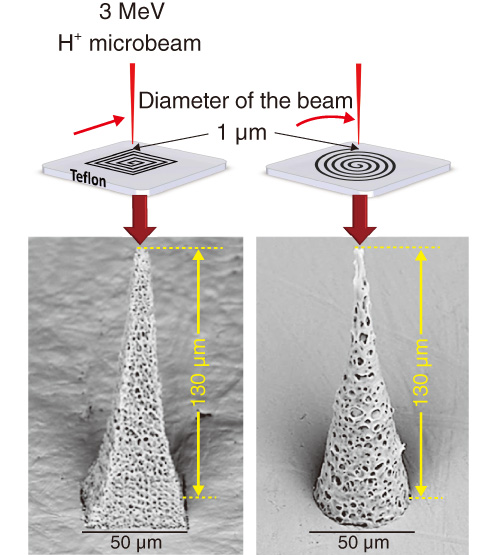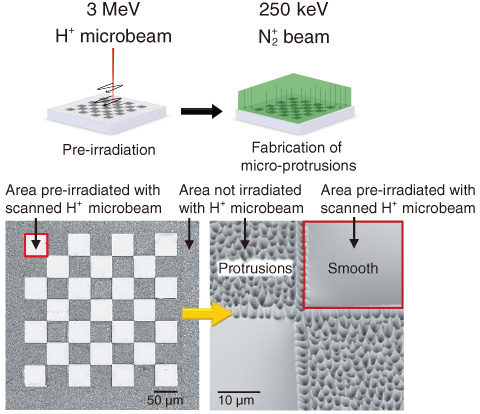
Fig.13-19 Microstructures on Teflon surfaces fabricated with scanned MeV H+ microbeams

Fig.13-20 Checkerboard pattern consisting of smooth and micro-protrusion areas fabricated with a scanned H+ microbeam before uniform N2+ beam irradiation
At the TIARA ion accelerator facility at the Japan Atomic Energy Agency/Takasaki, a microfabrication technique called proton (H+) beam writing (PBW) has been established on the basis of the techniques of focusing down an ion beam to a 1 µm spot size and scanning it arbitrarily over a target surface. Concerning the resist materials, we have demonstrated PBW’s specific ability to fabricate high-aspect-ratio microstructures with chemical etching after irradiation. We have attempted to apply the technique to Teflon® (fluoropolymer), on which is difficult to fabricate microstructures because of its chemical inertness, and started research on microfabrication to be realized only with ion microbeams.
First, a revolutionary technique using a MeV H+ microbeam was developed: fabrication of microstructures on a Teflon surface through a process of local rising (Fig.13-19). A 3 MeV H+ beam travels in a straight line to a depth of approximately 100 µm in Teflon. Along the trajectories, main-chain scission is induced, and consequently degradation gases are formed. The amount of the gases depends on the irradiation conditions such as the beam current, irradiation time, and scanning pattern. When the gases leave the inside of a Teflon target as bubbles, they raise the irradiated area; as a result, the morphology is changed, as shown in Fig.13-19.
When a Teflon surface is irradiated with keV nitrogen molecular ion (N2+) beams, an initial flat surface changes into a lawn-like one covered with dense micro-protrusions. In addition, we found the conditions under which H+ microbeam irradiation does not induce any surface morphological change due to the degradation gases but instead reduces the molecular weight. Subsequent N2+ beam irradiation makes the H+-irradiated surface evaporate uniformly and very smoothly. This morphological change was also applied to make a smooth surface with micro-protrusion areas at the same ground level (Fig.13-20).
It is shown that only ion beam irradiation can enable the microfabrication of chemically inert materials without any chemical processes. We intend to expand this technique to various materials other than Teflon.